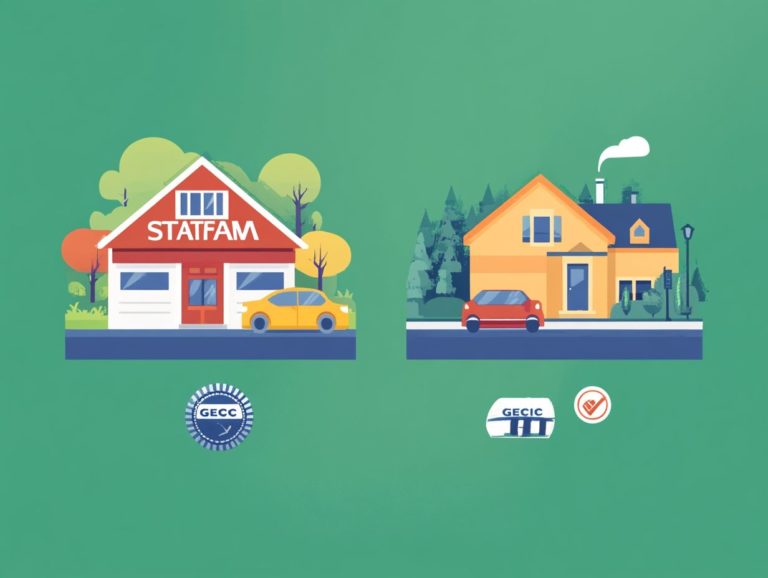How to Make an Informed Policy Decision
Making informed policy decisions is essential for effective governance. It influences everything from local communities to global issues.
This article explores the policy decision-making process. It highlights the key components and stakeholders involved.
You will discover the importance of evaluating potential solutions and their consequences before reaching a final decision. We will also look at how to implement and monitor policies to ensure they achieve their intended outcomes.
Join us on this exciting journey towards effective policymaking and enhance your understanding of the process.
Contents
- Key Takeaways:
- Understanding the Policy Decision-Making Process
- Identifying the Problem or Issue
- Gathering and Evaluating Information
- Exploring Potential Solutions
- Evaluating the Consequences
- Making the Final Decision
- Implementing and Monitoring the Policy
- Frequently Asked Questions
- What does it mean to make an informed policy decision?
- Why is it important to make an informed policy decision?
- What steps can I take to make an informed policy decision?
- How can I ensure that my policy decision is based on accurate information?
- What are some common mistakes people make when making policy decisions?
- Can making an informed policy decision be a collaborative process?
Key Takeaways:

- Learn to navigate the policy decision-making process by pinpointing key players and components.
- Gather and evaluate information by utilizing data and research to analyze the current situation and explore potential solutions.
- Consider the consequences and different approaches before making a final decision. Implement and monitor the policy for success, making adjustments as needed.
Understanding the Policy Decision-Making Process
Grasping the intricacies of the policy decision-making process is essential for effective governance. This journey involves a complex interaction among different groups involved.
It is often guided by the need for policies based on solid evidence and data designed to foster sustainable development outcomes tailored to specific challenges. Engage in meticulous analysis and evaluation, fostering collaboration among organizations and think tanks.
By leveraging data effectively, you can create a robust framework for successful implementation.
Key Components and Stakeholders
The key components of the policy decision-making process involve a diverse array of stakeholders. These include policymakers, civil servants, think tanks, and community leaders, each playing a vital role in shaping effective solutions.
These entities bring unique perspectives and expertise to the table. This allows for a more comprehensive understanding of the issues at hand.
You will find that policymakers rely on data and insights from think tanks, which conduct research and analysis to inform their strategies. Meanwhile, civil servants implement these policies, ensuring they meet the community’s needs while engaging with local leaders to gather essential feedback.
Collaboration is crucial; it creates an environment to collectively address challenges. This fosters synergies that lead to improved outcomes.
By working together, these stakeholders can navigate complex social issues and drive meaningful change.
Identifying the Problem or Issue
Identifying the problem or issue at hand is a crucial first step in the policy decision-making process. It demands thorough analysis and engagement from relevant stakeholders within the community to fully grasp the context and implications.
Analyzing the Current Situation
Analyzing the current situation requires you to gather and interpret data. This helps illuminate the challenges and outcomes that could influence your policy decisions.
This process typically begins with a range of data collection methods think surveys, interviews, and quantitative analysis. These approaches yield invaluable insights into stakeholder perspectives and assess the effectiveness of previous policies.
Engaging with stakeholders is essential; their feedback can reveal hidden issues and demonstrate the diverse impacts on different communities.
Evaluating past policy performance is key to gaining a well-rounded understanding of which strategies have thrived and which have not. This provides a crucial reference point.
By synthesizing these elements, you can generate actionable insights aimed at refining future policy directions and boosting overall effectiveness.
Gathering and Evaluating Information

Gathering and evaluating information is crucial for making well-informed decisions. It enables you, as a policymaker, to access the evidence and research necessary to shape your strategies and actions effectively, steering you toward the outcomes you desire.
Utilizing Data and Research
Utilizing data and research effectively can significantly enhance your well-considered decision-making process, enabling you to develop strategies that positively impact community outcomes.
Data sources like surveys, academic studies, and real-time analytics provide insights that inform your policies. Tapping into these resources helps you spot trends, needs, and opportunities in your community.
The integration of qualitative data such as public feedback and expert opinions plays a crucial role in understanding the human experience behind the numbers. This multifaceted approach not only bolsters the credibility of your initiatives but also ensures that the solutions you develop are firmly rooted in reality, optimizing the potential for successful implementation and sustainable impact.
Exploring Potential Solutions
Exploring potential solutions is a dynamic phase in the policy decision-making process. During this stage, you engage in collaboration with stakeholders, working together to develop strategies that effectively address the issues identified within the community.
Considering Different Approaches
Evaluate different approaches by blending top-down and bottom-up strategies, allowing for a more nuanced understanding of how policies can be tailored to meet specific needs. Top-down approaches might provide uniformity and efficiency, while bottom-up strategies foster local participation, creating a sense of ownership among stakeholders. Relying exclusively on one approach risks overlooking critical insights from the communities affected, which can lead to less effective outcomes.
By engaging stakeholders early in the policy development process, you not only enhance transparency but also enrich your data pool with diverse perspectives. Ultimately, finding the right balance between these approaches increases the likelihood of successful implementation and sustainable change.
Evaluating the Consequences
Evaluating the consequences of policy decisions is vital! This process helps ensure outcomes align with stakeholder goals, allowing for a more informed and effective approach to governance and community well-being.
Assessing Potential Outcomes

Assessing potential outcomes requires you to evaluate the effectiveness of the strategies you’ve implemented and understand their implications for stakeholders and the broader community.
This process involves a sophisticated blend of qualitative and quantitative measures, offering you a multifaceted understanding of the results. Qualitative data includes opinions and experiences, while quantitative data involves numbers and statistics. By utilizing surveys, interviews, and focus groups, you can gather rich narratives that capture the human experience behind the data.
Equally crucial is the analysis of numerical data, such as performance metrics and statistical trends, which provides a clearer picture of your success. Combining these approaches not only enhances your assessment but also helps you identify areas for improvement, ensuring that your decisions are informed, relevant, and beneficial for everyone involved.
Making the Final Decision
In the policy process, making the final decision represents a culmination of data-driven analysis, active stakeholder engagement, and thoughtful consideration of potential outcomes. This careful approach is key to driving the changes your community needs!
Factors to Consider
As you approach your final decision, consider key factors like available evidence, stakeholder perspectives, and the potential outcomes for the community.
Weighing the reliability of the data and establishing a clear analytical framework is crucial for making informed choices. Community input through surveys can offer valuable insights, capturing diverse viewpoints that might otherwise slip through the cracks.
Anticipating future consequences, such as economic impacts or social changes, adds another layer of complexity to the decision-making process. Consider the ethical implications of your choices, especially if they affect vulnerable populations, ensuring that fairness and equity remain at the forefront of your considerations.
Implementing and Monitoring the Policy
Implementing and monitoring the policy is essential for ensuring that your strategies are executed with precision. Continuously evaluating your outcomes keeps you on your toes, allowing you to adapt seamlessly to any changing circumstances.
This proactive approach empowers you to stay ahead of the game and refine your methods as needed.
Ensuring Success and Making Adjustments
Ensuring your success and making necessary adjustments throughout the monitoring process is vital for maintaining effective policy outcomes and stakeholder satisfaction.
To achieve this, you must implement strong approaches for continuous evaluation. Regular assessments provide real-time insights, and engaging stakeholders offers valuable feedback that pinpoints areas for improvement. This iterative feedback loop identifies potential challenges and fosters collaboration among all parties involved, ensuring that everyone s voice is heard.
When adjustments are needed, a systematic approach enables you to make informed decisions, enhancing the likelihood of favorable results and reinforcing trust in the policy framework.
Frequently Asked Questions

What does it mean to make an informed policy decision?
Making an informed policy decision means taking into account all relevant information and data before determining a course of action.
Why is it important to make an informed policy decision?
An informed policy decision can lead to more effective and efficient policies, resulting in better outcomes for individuals and the community as a whole.
What steps can I take to make an informed policy decision?
Some steps you can take include conducting research, gathering data and statistics, consulting with experts and stakeholders, and considering potential consequences of different policy options.
How can I ensure that my policy decision is based on accurate information?
Verify the credibility of your sources and double-check any data or statistics used. Seek input from multiple sources to get a well-rounded understanding of the issue.
What are some common mistakes people make when making policy decisions?
Common mistakes include relying on biased or incomplete information, not considering all stakeholders’ perspectives, and failing to anticipate potential unintended consequences.
Can making an informed policy decision be a collaborative process?
Yes, involving a diverse group of individuals with varying expertise and perspectives in the decision-making process can lead to more well-rounded and effective policies.






